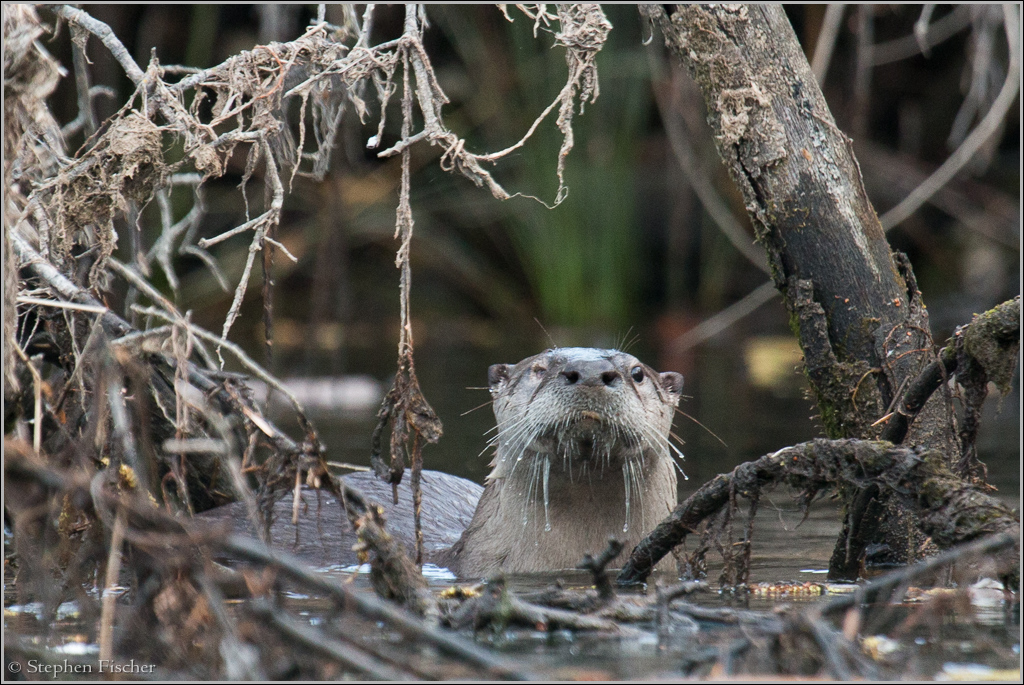Picture of the week
| Previous weeks |
 Jan
12, 2014 Jan
12, 2014 |
|
|
|
|
|
|
|
|
|
|
 Nov
17, 2013 Nov
17, 2013 |
|
|
|
|
 Oct
20, 2013 Oct
20, 2013 |
|
|
 Oct
6, 2013 Oct
6, 2013 |
| Older |

One-eyed otter
A northern river otter missing one eye taking a peek from behind the brush. I encountered this otter while kayaking on Lake Natomas in the morning shortly after sunrise. I have seen otters in this particular area of the lake on multiple occasions; Each time getting more familiar with indicators of their presence, when and where to look. They are a social animal and tend to hang around in small groups of 2 to 4. Characteristic of these species, they are curious about humans that intrude into their territory, and can't help but to take a look at you from a position that they consider safe. But if you get too close, they will dive underwater to avoid you, holding their breath for minutes at a time, and potentially leaving the area. So the trick is to give the otter(s) enough distance to show themselves and observe you without chasing them off. It is hard to tell how this particular otter lost one of its eyes, but it seemed to be healthy enough and active otherwise, swimming with one other otter that I could tell.
Being on a kayak in the morning can be a serene and beautiful experience, with the presence of the wildlife only adding to the magic. I used my Canon 100-400 f/4.5-5.6 IS L-series push-pull zoom lens with the newer 70D body to capture this shot. Settings were ISO 1600, 1/320 sec, f/5.6, and +1/3 stop of exposure compensation due to the more subdued lighting. This lens and body is one of my favorite setups for this type of wildlife photography due to its compactness, portability, image stablization, and high image quality. I have a small waterproof pelican case mounted on the top deck of the kayak that I can readily access for this type of shooting. Photographing from the kayak tends to be more fruitful for wildlife photography, as many species seem to feel more comfortable with humans when down at their level on the water, thus allowing you to approach within a closer distance for better quality photographs. You can also reach areas on the waterways otherwise not possible on foot.
All content and images are property of Stephen Fischer Photography, copyright 2013, 2014. Last updated: 1/26/2014 ()